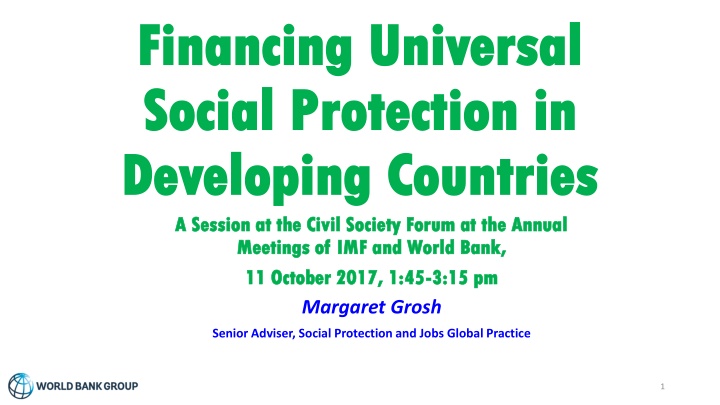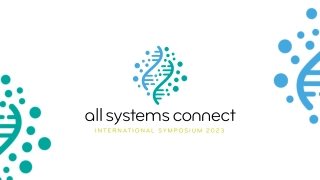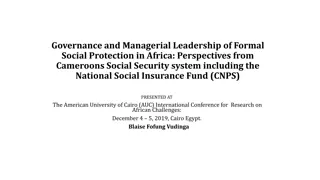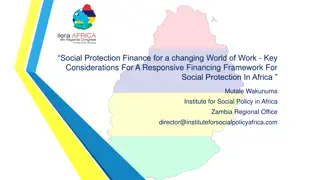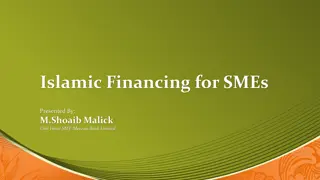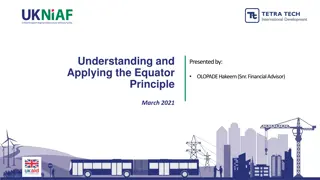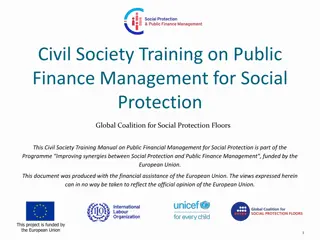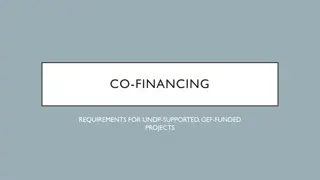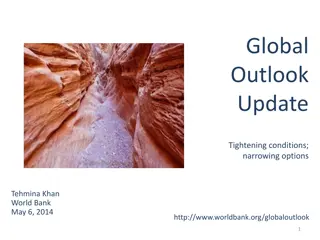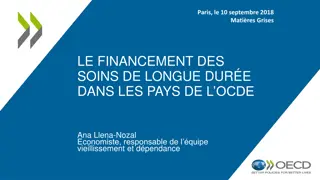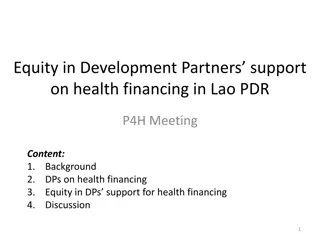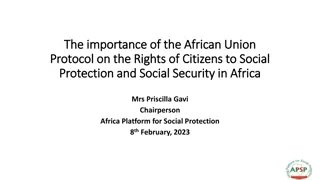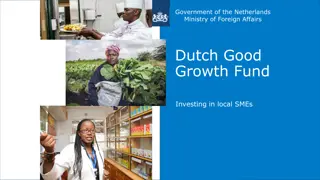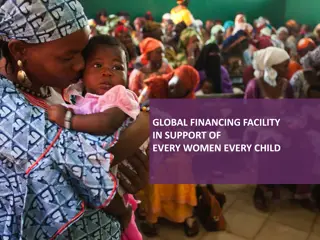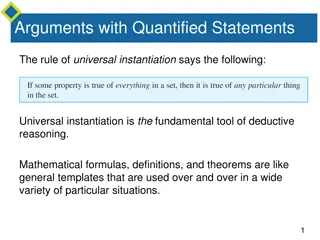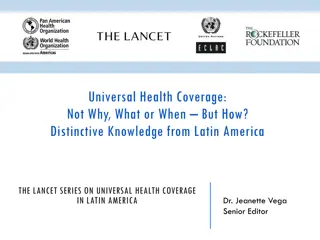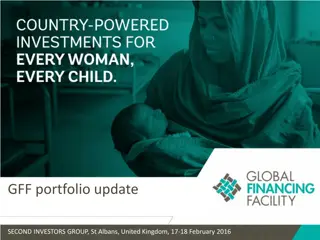Financing Universal Social Protection in Developing Countries
Promoting the principles of Universal Social Protection (USP) in developing countries contributes to achieving the Sustainable Development Goals by providing social protection for all in need. Activities include labor market programs, social safety nets, and social insurance to enhance living standards, prevent risks, and protect populations from shocks.
Download Presentation

Please find below an Image/Link to download the presentation.
The content on the website is provided AS IS for your information and personal use only. It may not be sold, licensed, or shared on other websites without obtaining consent from the author.If you encounter any issues during the download, it is possible that the publisher has removed the file from their server.
You are allowed to download the files provided on this website for personal or commercial use, subject to the condition that they are used lawfully. All files are the property of their respective owners.
The content on the website is provided AS IS for your information and personal use only. It may not be sold, licensed, or shared on other websites without obtaining consent from the author.
E N D
Presentation Transcript
Financing Universal Financing Universal Social Protection in Social Protection in Developing Countries Developing Countries A Session at the Civil Society Forum at the Annual A Session at the Civil Society Forum at the Annual Meetings of IMF and World Bank, Meetings of IMF and World Bank, 11 October 2017, 1:45 11 October 2017, 1:45- -3:15 pm Margaret Grosh 3:15 pm Senior Adviser, Social Protection and Jobs Global Practice 1
Promoting the principles of Universal Social Protection (USP) Promoting the principles of Universal Social Protection (USP) a joint initiative of the WB, ILO, donors and other partners launched in Sep. 2016 and aimed at providing social protection for all people in need; Contributing to the Sustainable Development Goals (SDG) agenda: Contributing to the Sustainable Development Goals (SDG) agenda: SDGs Goal 1 to end (extreme) poverty in all its manifestations by 2030; ensure social protection for the poor and vulnerable; Target 1.3 implement nationally appropriate social protection systems and measures for all, including floors, and by 2030 achieve substantial coverage of the poor and the vulnerable; Target 1.5 build the resilience of the poor and those in vulnerable situations and reduce their exposure and vulnerability to climate-related extreme events and other economic, social and environmental shocks and disasters; 2
Social Protection - Activities Social Protection Labor Market Programs (Contributory and non contributory) Social Safety Nets/Social Assistance (Non contributory) Social Insurance (Contributory) To ensure adequate living standards in the face of shocks and life changes (To promote labor inclusion and reintegration) To prevent and protect from risks and shocks Active labor market programs Passive labor market programs Unconditional cash transfers (UCT) Conditional cash transfers (CT) Non-contributory social pensions Food and in-kind programs School feeding Public works and food for works Fee waivers and targeted subsidies Other social assistance Contributory pensions Other social insurance 3
The number of low income developing countries and emerging market The number of low income developing countries and emerging market economies with social safety nets/social assistance programs doubled economies with social safety nets/social assistance programs doubled in the last two decades in the last two decades from 72 to 149 countries; Figure: Number of developing countries & emerging market economies with social safety net/social assistance programs Source: Atlas of Social Protection: Indicators of Resilience and Equity (ASPIRE) database -- www.worldbank.org/aspire. 4
Most countries have a diverse set of social safety nets/social assistance Most countries have a diverse set of social safety nets/social assistance instruments in pursuit of greater results instruments in pursuit of greater results Figure: Number (share) of developing countries and emerging economies with Social Safety Net/Social Assistance instrument 140 124 (78%) 122 (77%) 120 95 (60%) 91 (58%) 100 89 (56%) 86 (54%) 80 67 (42%) 60 40 20 0 School feeding Unconditional cash transfers Unconditional in-kind transfers Public works Fee waivers Social pensions Conditional cash transfers Source: Atlas of Social Protection: Indicators of Resilience and Equity (ASPIRE) database -- www.worldbank.org/aspire. Notes: The total number of countries used in the calculation of percentages is 158. 5
What we see around the world is a rapid and substantial increase in coverage What we see around the world is a rapid and substantial increase in coverage e.g. in Colombia, Peru and Philippines the coverage of conditional cash transfer (CCT) programs has increased from 5% of population at the program inception to more than 15-20% a decade later; Figure: Coverage of CCTs in selected countries, % of population Source: Atlas of Social Protection: Indicators of Resilience and Equity (ASPIRE) database -- www.worldbank.org/aspire. 6
What we see around the world is a rapid and substantial increase in coverage What we see around the world is a rapid and substantial increase in coverage many countries in Africa are introducing flagship SSN programs and are expanding their coverage fast; Figure: The expansion of the flagship Social Safety Net programs in Tanzania and Senegal (N of beneficiary HHs and % of population covered) Source: Atlas of Social Protection: Indicators of Resilience and Equity (ASPIRE) database -- www.worldbank.org/aspire. Notes: Bars (blue) indicate number of beneficiaries (households); line (orange) indicates % of population covered by the program. 7
However, more needs to be done as significant However, more needs to be done as significant gaps in coverage especially in low-income countries, where only 20% of the poor are covered by social safety nets/social assistance programs; gaps in coverage remain around the globe remain around the globe Figure: Coverage of the poor (bottom 20%) by social safety nets/social assistance programs Source: ASPIRE database. Notes: LIC Low Income countries; LMIC Lower Middle Income countries; UMIC Upper Middle Income countries; HIC High Income countries. 8
More also needs to be done as significant More also needs to be done as significant gaps in adequacy world world especially in low-income countries, where social assistance/safety net transfers leave a substantial (17%) poverty gap; gaps in adequacy remain around the remain around the Figure: Poverty gap pre vs. post social safety net/social assistance transfer, % of international poverty line 20% 15% 10% 5% 0% LIC LMIC UMIC HIC Pre Transfer Post Transfer Source: Atlas of Social Protection: Indicators of Resilience and Equity (ASPIRE) database -- www.worldbank.org/aspire. Notes: LIC Low Income countries; LMIC Lower Middle Income countries; UMIC Upper Middle Income countries; HIC High Income countries. Poverty gap refers to the distance between household per capita welfare (consumption/income) and a poverty line. For the non-poor, this gap is equal to zero. 9
Globally, developing countries and emerging market economies spend Globally, developing countries and emerging market economies spend an average of 1.6% of GDP on social safety nets/social assistance programs an average of 1.6% of GDP on social safety nets/social assistance programs; however, significant variations in spending are observed across countries/regions Figure: Spending on Social Safety Net programs across the regions, % of GDP Source: Atlas of Social Protection: Indicators of Resilience and Equity (ASPIRE) database -- www.worldbank.org/aspire. 10
Growing financing of and engagement in social protection projects; Growing financing of and engagement in social protection projects; the size of the World Bank s social protection lending portfolio has increased substantially in the last few years; Figure: The size of the World Bank s Social Protection lending portfolio, US$ billion Source: World Bank Operations Portal. 11
Focusing resources on IDA and fragility, conflict & violence countries Focusing resources on IDA and fragility, conflict & violence countries; for the first time the World Bank s social protection lending is higher in IDA rather than in IBRD countries; IDA is now 50% of total portfolio; Figure: The size of the World Bank s social protection lending by country status, 2017, US$ billion Figure: The size of the World Bank s social protection portfolio commitment from IDA as a financing source, FY13-FY16, US$ billion 3 2.5 2.5 2 1.5 1.5 1 0.8 0.5 0 FY14 FY15 FY16 Source: World Bank Operations Portal. Notes: IDA International Development Association; IBRD International Bank for Reconstruction and Development. 12
SPL public action is still constrained by myths and competition for resources: SPL public action is still constrained by myths and competition for resources: CSO work to build societal knowledge and consensus would be very welcome CSO work to build societal knowledge and consensus would be very welcome Myths to dispel, Positive Ideas to spread: e.g.: - from the poor are lazy, handouts make them lazier to most poor work, income support often releases constraints and makes them more productive and/or builds the health and education of their children - From the poor spend resources unwisely to the poor spend their income support on more and better food, often more health or education, and if there is enough, on savings or investments in their enterprises . - We have ample and growing evidence on these things. How do we get policymakers and societies to know and believe them? There are policy choices to make and consensuses to build: - More universal and more costly? Or more narrowly targeting and lower fiscal cost? What mix? Where is the sweet spot on solidarity? - When and how are countries willing to confront either additional taxes or reforms of general subsidies or other programs to make space for USP? 13
